I'm having a problem with my Button staying in a highlighted state, after doing the following:
public class MainActivity extends AppCompatActivity {
@SuppressLint("ClickableViewAccessibility")
@Override
protected void onCreate(Bundle savedInstanceState) {
super.onCreate(savedInstanceState);
setContentView(R.layout.activity_main);
AppCompatButton button = (AppCompatButton) findViewById(R.id.mybutton);
button.setOnClickListener(new View.OnClickListener() {
@Override
public void onClick(View v) {
Log.d("Test", "calling onClick");
}
});
button.setOnTouchListener(new View.OnTouchListener() {
public boolean onTouch(View v, MotionEvent event) {
switch (event.getAction()) {
case MotionEvent.ACTION_DOWN: {
v.getBackground().setColorFilter(0xe0f47521,PorterDuff.Mode.SRC_ATOP);
v.invalidate();
break;
}
case MotionEvent.ACTION_UP: {
v.getBackground().clearColorFilter();
v.invalidate();
v.performClick();
Log.d("Test", "Performing click");
return true;
}
}
return false;
}
});
}
}
Concerning the code above, when using it, I'm expecting the button click to be handled by the touch, and by returning "true" the handling should stop at the touchListener.
But this is not the case. The button stays in a highlighted state, even though the click is being called.
What I get is:
Test - calling onClick
Test - Performing click
on the other hand, if I'm using the following code, the button is clicked, same prints, but the button doesn't end up stuck in a highlighted state:
public class MainActivity extends AppCompatActivity {
@SuppressLint("ClickableViewAccessibility")
@Override
protected void onCreate(Bundle savedInstanceState) {
super.onCreate(savedInstanceState);
setContentView(R.layout.activity_main);
AppCompatButton button = (AppCompatButton) findViewById(R.id.mybutton);
button.setOnClickListener(new View.OnClickListener() {
@Override
public void onClick(View v) {
Log.d("Test", "calling onClick");
}
});
button.setOnTouchListener(new View.OnTouchListener() {
public boolean onTouch(View v, MotionEvent event) {
switch (event.getAction()) {
case MotionEvent.ACTION_DOWN: {
v.getBackground().setColorFilter(0xe0f47521,PorterDuff.Mode.SRC_ATOP);
v.invalidate();
break;
}
case MotionEvent.ACTION_UP: {
v.getBackground().clearColorFilter();
v.invalidate();
// v.performClick();
Log.d("Test", "Performing click");
return false;
}
}
return false;
}
});
}
}
I'm a bit confused as to what's the responder chain to the touch event. My guess is that it's:
1) TouchListener
2) ClickListener
3) ParentViews
Can someone confirm this as well?

